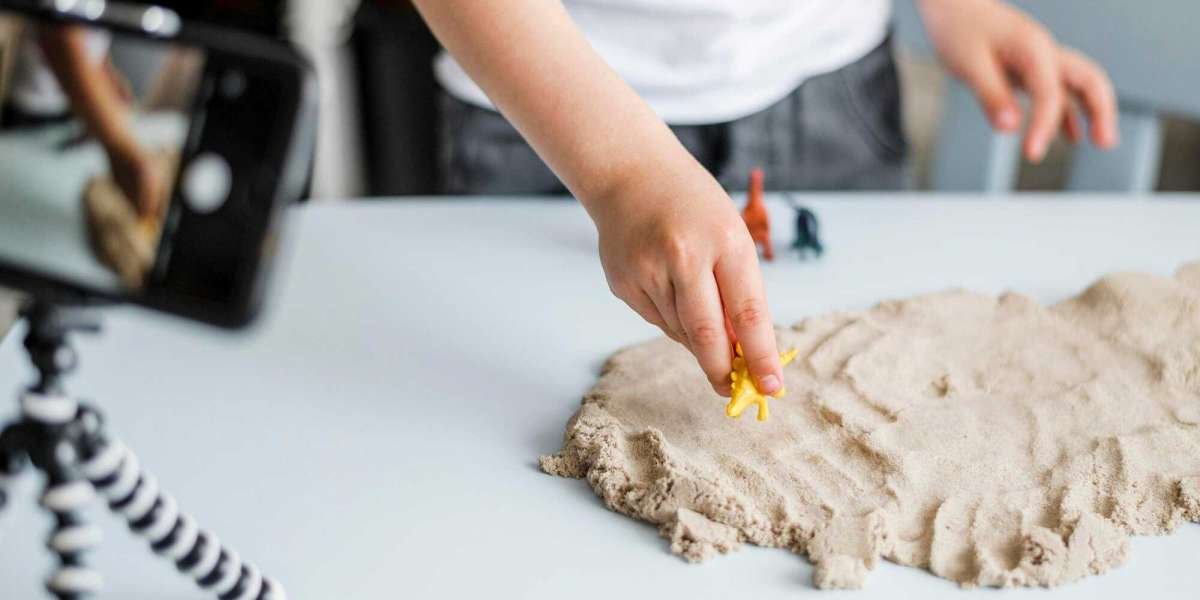For play therapists, sand therapy acts as an extension of their therapeutic tool kit to maximize the outcomes of therapy. Sand therapy has emerged as a powerful therapeutic tool that offers a non-verbal medium for clients to express their inner emotions and process trauma that prevents them from leading a normal life. Therapists are actively seeking innovative approaches to implement in play therapy, and continuous advancements in sand therapy techniques have afforded therapists a unique opportunity to support families and individuals struggling with emotional issues.
Theoretical Foundations of Sandtray Therapy
The roots of sand therapy can be traced to Jungian philosophy, while Dora Kalff was one of the pioneers of this approach. This method draws upon symbolic expression to help clients overcome their hesitance in expressing themselves and instead utilize miniature figures in a sandbox to create visual narratives that reflect their inner world.
The therapist acts as a guide and witness in this process as he collaborates with clients to unravel the meaning behind these material creations in a sandbox. Sand therapy essentially relies on non-verbal cues and expressions, making it particularly effective for individuals who find it hard to communicate their feelings, such as trauma survivors and children who have endured bullying.
Utility Of Sand Tray Therapy In Clinical Settings
Although primarily used on young children, this play therapy method offers therapeutic benefits for diverse groups, including adults. An interesting aspect of sand therapy is that the sand comes in different colors to evoke specific experiences or emotions in clients. For example, the psychological impact of white sand is different from that of red or purple sand.
Since the sand is malleable, clients can easily mold it to represent their environment, which adds to the symbolic potential of the therapy. As clients immerse their hands or items in sand, they experience tactile sensations similar to those associated with the beach. The sand provides a medium for clients to engage with their senses and produces a sense of calm.
Discover how you can incorporate sand tray in play therapy sessions through our exclusive workshop to enhance your expertise in applying sand tray techniques to further your client’s well-being.
How Sandtray Therapy Enhances Play Therapy Sessions
Sandtray Therapy is a highly adaptable approach that integrates seamlessly into various therapeutic settings and offers numerous psychological and emotional benefits. Below is a comprehensive breakdown of how it can help enhance your play therapy sessions
1. Encourages Emotional Expression
Many people, particularly children, struggle to express their emotions verbally. That is where non-verbal communication methods, like that of sandtray therapy, bridge the gap. Research has suggested that these methods offer an accessible way for individuals to express complex emotions. By using miniature figurines and symbols, children can externalize their inner thoughts and emotions in a tangible way. Studies indicate that children engaging in sandtray therapy demonstrate improved emotional articulation and a significant reduction in behavioral issues.
2. Strengthens the Therapeutic Relationship
The foundation of successful therapy is a strong client-therapist relationship, and sandtray therapy creates this bond through a non-intrusive, client-led approach. When therapists engage with a child's chosen representations in the sand, it signals validation and understanding, which are essential for trust-building. As children shape their sand worlds, therapists gently observe the patterns, symbols, and stories that unfold. These unspoken expressions often reveal emotions and experiences that words alone might not capture. This quiet, shared interaction creates trust and understanding, and ultimately a space where children feel safe to explore their feelings and open up at their own pace.
3. Facilitates Trauma Processing
For individuals who have experienced trauma, verbalizing distressing memories can be overwhelming or even retraumatizing for them. Sandtray therapy provides a structured yet flexible method for processing trauma at a self-regulated pace. Multiple research studies have suggested that sensory-based interventions, including sandtray therapy, activate areas of the brain associated with trauma processing, such as the amygdala and hippocampus. In fact, a study found that children with PTSD symptoms who participated in sandtray therapy exhibited significant reductions in anxiety and emotional dysregulation.
4. Encourages Problem-Solving and Decision-Making
Sandtray therapy is not just a way for children to express their emotions—it also helps develop important thinking skills like decision-making and problem-solving. As they choose, arrange, and make sense of the objects in the sand, they practice thinking critically and learning to see things from different perspectives. This process strengthens their ability to adapt, make choices, and explore solutions in a creative and meaningful way.
5. Enhances Self-Awareness and Personal Growth
When children create scenes in the sand, they bring their inner world to life in a way that feels natural and safe. This helps them understand their emotions, behaviors, and experiences without needing to put them into words. Using symbols in therapy engages parts of the brain that help with self-awareness and emotional processing. Over time, children often gain better control over their emotions and develop a clearer understanding of themselves. As they build and revisit their sand scenes, they start to recognize patterns in their thoughts and emotions, which ultimately helps them make sense of their experiences and build emotional resilience.
Incorporating Narrative Therapy in Sandtray Sessions
Narrative therapy can be seamlessly integrated with sandplay techniques to express complex emotions and experiences through symbolic play. Sand therapy provides a non-verbal, symbolic space for clients to reframe their life stories by arranging figurines and objects in the sand. By doing so, clients can reconstruct a story about a significant life experience or inner conflict that they cannot articulate verbally.
- Externalization — A core narrative therapy technique is to encourage clients to externalize the negative aspects of their story in terms of specific objects in the sand tray. By separating the individual from the problem, the underlying idea is to reduce the influence of problematic narratives whereby clients blame themselves for the problem.
- Re-authoring — The therapist guides clients towards creating an alternative narrative that depicts a positive scenario in which they desire to reinforce their inner strength and resilience.
- Deconstruction — The therapist then helps clients decode or interpret the meaning behind their sandtray creations to uncover underlying beliefs and assumptions that drive the client to think a certain way.
Sandtray Worldplay Intervention for Autism Spectrum Disorder
A large number of studies have indicated the therapeutic value of using sandplay therapy on children with ASD, whereby it exposes them to a rich sensory experience. All that is required is a wooden or plastic tray filled with sand alongside a selection of small objects like toys, animal figurines, cars, pebbles, small containers, leaves, or colored blocks. These objects act as great play materials for stimulating the imagination of children with ASD and helping them create an imaginative world that reveals their interests or emotional state.
The therapist can ask children questions about what they are doing or why they drew a particular pattern on the sand. The sand tray can also be adapted for children who find social interaction difficult by pushing them to engage with other children in creating sand trays. This can develop their social skills and help them overcome their anxiety when interacting with others.
A prominent name in the field of play therapy, Dr. April Duncan DSW, LCSW, RPT-S brings over a decade of practical experience that has bolstered her expertise in the practice of sand tray therapy. She is dedicated to empowering children, especially those from marginalized communities affected by racial trauma, through innovative play therapy techniques. Explore her full range of on-demand and live courses to expand your expertise and enhance therapeutic outcomes for your clients.
Conclusion
Advanced sandtray therapy techniques utilize creative expression as a therapeutic tool to encourage clients to embrace their feelings and represent them symbolically. Therapists can utilize sandtray therapy to elicit responses in clients and uncover the workings of their unconscious mind. As the field continues to evolve, sand therapy offers a profound opportunity to harness the potential of symbolic play as a counseling technique to foster emotional growth in clients and strengthen relationships within families. By integrating sandtray therapy into group play sessions, you can create a supportive space for clients to process emotions and heal. Our live and on-demand courses offer practical insights to help you apply these techniques with confidence.














